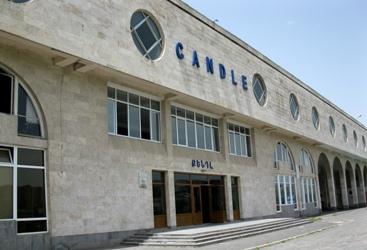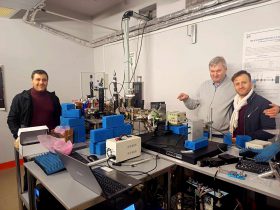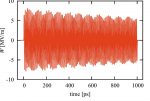December 12, 2020
The development of advanced particle radiation sources in THz frequency range is one of the promising areas of cooperation between German and Armenian scientists in the field of accelerator and beam physics. The results of the dielectric loaded structure based coherent radiation source study have recently been published in the Journal of Synchrotron Radiation (K. Floettmann et al, “Superradiant Cherenkov–wakefield radiation as THz source for FEL facilities”, J. Synchrotron Rad. (2021). 28, p.1-10).
Superradiant Cherenkov–wakefield radiation presents an attractive option as a THz source especially for the lower-frequency range up to a few THz. This type radiation facility could serve also as a compact THz source for X-ray Free Electron Lasers in order to support pump-probe type experiments. X-ray free-electron lasers are the brightest, tunable sources of short X-ray pulses available for basic scientific researches. In order to unfold the full scientific potential of FELs it is, however, mandatory to complement the X-ray sources with suitable pump sources for pump–probe type experiments. The selective (non-linear) excitation of the matter by electromagnetic radiation in the sub-THz to THz range (few meV photon energies) enables the deposition of energy into specific low-frequency modes of the material and thus allows to control the impact of various degrees of freedom onto material properties. The quest for suitable THz sources for pump–probe-type experiments at XFEL facilities is thus a major development goal.
In this paper, authors consider superradiant THz radiation which is generated by electron beams passing through vacuum pipes, the inner layers of which are coated by dielectric material. This radiation process is known as the Cherenkov radiation. Based on a discussion of the radiation characteristics, relations, to estimate radiated energy, power and pulse length for a set of structure parameters, are derived and compared with numerical results. These results open new outlooks for the application of dielectric loaded structures in new generation of THz coherent radiation sources.













